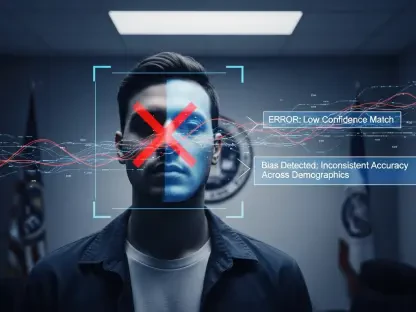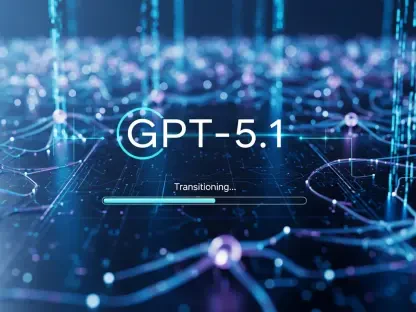I’m thrilled to sit down with Laurent Giraid, a renowned technologist whose groundbreaking work in artificial intelligence has been shaping the future of the field. With a deep focus on machine learning, natural language processing, and the ethical implications of AI, Laurent has been at the forefront of integrating rigorous tools like Lean4 to enhance the safety and reliability of AI systems. In this conversation, we dive into the transformative potential of Lean4, exploring how it addresses critical challenges like unpredictability and hallucinations in AI, its role in formal verification, and its impact on building trust in high-stakes applications. From software security to the future of trustworthy AI, Laurent shares insights on why this open-source tool is becoming a cornerstone for the industry.
Can you explain what Lean4 is in simple terms and how it functions as both a programming language and a proof assistant?
Absolutely. Lean4 is an open-source tool that serves a dual purpose: it’s a programming language for writing code and a proof assistant for mathematically verifying that the code or logic is correct. Think of it as a super-strict editor that doesn’t just let you write instructions—it forces you to prove that every step you take is logically sound. As a programming language, it lets you build software or algorithms, but as a proof assistant, it checks every claim or statement against a trusted kernel, giving a clear yes or no on whether it holds up. This combination is powerful because it ensures that what you build isn’t just functional but provably correct, which is a game-changer for fields like AI where errors can have big consequences.
What makes Lean4 stand out compared to other tools used in AI or software development?
Lean4’s uniqueness lies in its uncompromising focus on formal verification. Unlike many tools in AI or software development that rely on testing or probabilistic checks, Lean4 demands mathematical proof for every piece of logic or code. Most AI systems today operate on approximations—think of neural networks guessing based on patterns. Lean4, on the other hand, offers deterministic results: if something passes its checks, it’s guaranteed to be correct, not just likely. Also, its open-source nature and growing community support mean it’s accessible and constantly evolving, unlike some proprietary or niche verification tools that are harder to adopt widely.
Why do you believe Lean4 is becoming so critical for AI systems today?
AI systems, especially large language models, have incredible potential but are often unpredictable. They can produce incorrect outputs or hallucinations—confidently stating falsehoods—which is a huge problem in areas like medicine or finance where mistakes aren’t an option. Lean4 steps in as a solution by providing a framework to inject rigor and certainty. It’s not just about catching errors after the fact; it’s about building AI that’s correct by design through formal verification. This ability to mathematically guarantee outcomes makes Lean4 a vital tool for creating AI that’s not only powerful but also safe and reliable for real-world use.
How does Lean4 specifically help in providing certainty for AI outputs?
Lean4 ensures certainty by requiring every statement or program to be verified by its trusted kernel, which acts like an impartial judge. If you make a claim or write a piece of code, Lean4 checks every logical step against strict rules. If it passes, you have a formal proof that it’s correct—no guesswork involved. This is a stark contrast to typical AI models that rely on probabilities and might give different answers to the same question. With Lean4, the same input always yields the same verified result, offering a level of consistency and transparency that builds trust in AI outputs, especially for critical applications.
Can you elaborate on how Lean4 is being used to combat AI hallucinations?
Certainly. Hallucinations in AI occur when a model outputs false information with high confidence. Lean4 tackles this by turning the AI’s reasoning into a series of verifiable steps. For instance, instead of just accepting an AI’s answer, systems using Lean4 translate each part of the reasoning into formal logic and check if it holds up as a proof. If any step fails, it’s a red flag that the output might be incorrect. This step-by-step audit catches errors in real time, ensuring the AI doesn’t present unverified claims. It’s like having a fact-checker built into the AI’s thought process, making the output far more dependable.
What are some practical examples of Lean4’s impact on AI reliability in real-world scenarios?
One standout example is in the realm of mathematical problem-solving, where a system developed by a startup uses Lean4 to verify solutions before presenting them to users. This system achieved remarkable results in international math competitions, not just by solving problems but by providing formal proofs that guarantee no errors or hallucinations. Beyond math, imagine an AI in finance that only gives advice if it can prove compliance with regulations using Lean4, or a medical AI that verifies its diagnoses against established protocols. These applications show how Lean4 can build trust by ensuring AI doesn’t just sound right—it proves it is right.
How does Lean4’s formal verification contribute to precision and transparency in AI development?
Formal verification with Lean4 ensures precision by enforcing strict logical rules at every step of the process. There’s no room for ambiguity—each piece of reasoning or code must be proven valid, so the end result is as accurate as possible. Transparency comes from the fact that every proof in Lean4 is auditable. Unlike neural networks, which often act as black boxes, Lean4 allows anyone to inspect the logic behind an AI’s output and reproduce the results independently. This openness is crucial for trust, especially in high-stakes fields where understanding how a decision was made is as important as the decision itself.
In what ways can Lean4 enhance software security when integrated with AI?
Lean4 can significantly boost software security by enabling the creation of provably correct code. Bugs and vulnerabilities often stem from small logical errors that slip through traditional testing. With Lean4, you can write code accompanied by proofs that guarantee it won’t crash, leak data, or have issues like buffer overflows. When paired with AI, this becomes even more powerful—AI can assist in generating code, and Lean4 verifies it. This could transform industries like healthcare or banking, where a single software flaw can be catastrophic, by ensuring systems are secure by design, not just through after-the-fact patches.
What’s the current landscape of Lean4 adoption in the AI community?
Lean4 is gaining traction rapidly, moving from a niche academic tool to a mainstream asset in AI. Major tech companies and startups are exploring its potential—some have trained AI models to solve complex problems by generating formal proofs in Lean4, achieving impressive results in areas like mathematics. There’s also a vibrant community of researchers and developers contributing to libraries and tools around Lean4, which is accelerating its adoption. While it’s still early days, with challenges like scalability and user expertise to overcome, the momentum is clear: Lean4 is becoming a key player in the push for reliable and safe AI.
What is your forecast for the role of Lean4 in the future of AI safety and reliability?
I’m optimistic that Lean4 will become a cornerstone in building trustworthy AI over the next decade. As AI systems take on more critical roles in our lives—think autonomous vehicles or medical diagnostics—the demand for provable safety and reliability will skyrocket. Lean4’s ability to provide mathematical guarantees rather than just promises positions it as a vital tool in this evolution. I foresee broader adoption across industries, more seamless integration with AI workflows, and advancements in automation that make formal verification accessible to non-experts. Ultimately, Lean4 could help us move from AI that’s merely impressive to AI that’s demonstrably dependable, shaping a future where trust in technology is backed by proof.









